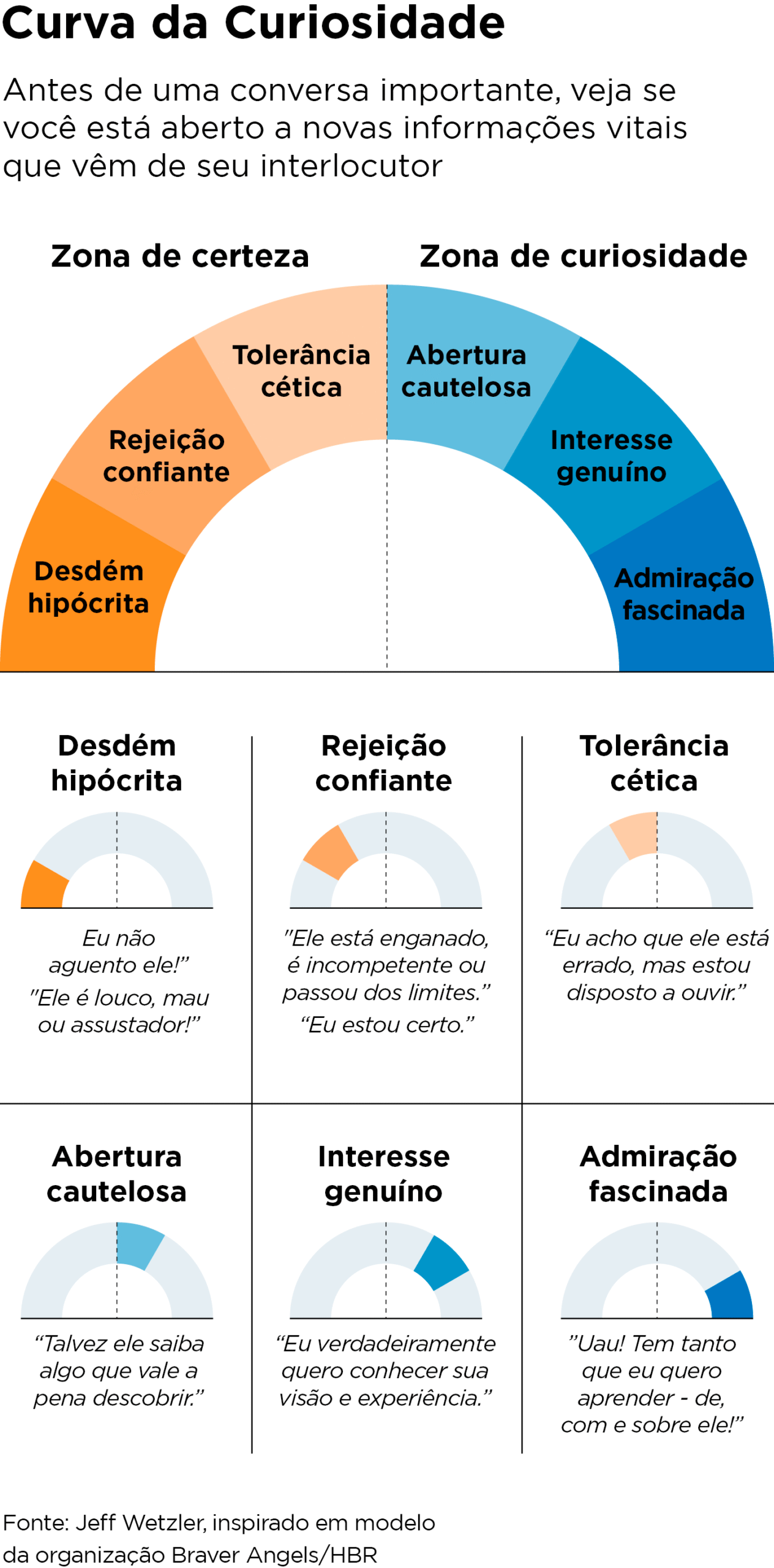Business leaders make important decisions on a daily basis, but they're not always mentally prepared for the high-stakes conversations they need to have—they use preconceived ideas and preconceived ideas. This lack of flexibility, in situations like performance meetings and strategic investment deliberations, can impact relationships, frustrate the purpose of the interaction, and ultimately undermine the effectiveness of the process. the reputation of the executive and the company.
Learning and leadership expert Jeff Wetzler has come up with a formula to help leaders move from what he calls defensive certainty to productive curiosity in these moments: the “Curiosity Test.”
The test is a quick self-diagnosis that encourages openness to new information and a state of mental readiness that can improve efficiency in high-stakes conversations, says the psychologist, in aarticle The Right Way to Prepare for a High-Stakes Conversation, published in the Harvard Business Review. Author of the book Ask the right question (Best Business publisher)Wetzler recognizes the power of preparation, in which the leader anticipates, prepares arguments and objections, and rehearses their key points. However, he believes that when entering a critical conversation certain of the outcome, one doesn't seek new data or examine the issue from different perspectives.
. You can read more about leadership and reputation in interview with consultant and CEO coach Vicky Bloch
"Curiosity increases your ability to process new information and respond creatively to complex problems. It activates the brain's learning and reward centers, increasing your capacity for understanding, clarity, and creative problem-solving. Curious individuals demonstrate greater resilience when faced with unexpected information."
Take the test
The “Curiosity Test,” developed by Wetzler, has three steps and, according to him, takes no more than five minutes before an important conversation.
Step 1 – Locate your current mindset on the Curiosity Curve
- The idea here is to become aware of your mindset before engaging in the conversation. Therefore, you should check where you are on the Curiosity Curve, a semicircle formed by two halves, each with three zones.
- The left half represents the zones of certainty: Hypocritical Disdain, Confident Rejection, and Skeptical Tolerance.
- The right half represents three zones of curiosity: Cautious Openness, Genuine Interest, and Fascinated Admiration.

According to Wetzler, most leaders recognize that they typically enter high-stakes conversations in one of the certainty zones. This positioning, the expert asserts, provides psychological comfort and apparent confidence, but can undermine the conversation's effectiveness. Similarly, the simple act of recognizing one's mindset on the Curiosity Curve fosters awareness of one's own thought patterns—and self-awareness is a step toward mindset change.
Step 2 – Set your curiosity intention
Now it's time to identify the mindset you want to adopt. Wetzler's advice is to be ambitious, but not overly so, and to pursue a viable mindset.
Step 3 – Ask yourself curious questions to make the change
To help implement the shift toward a curious mind, Wetzler recommends tools like what he calls "curiosity sparks," questions that facilitate the process. Below are five of them:
- What might the other person be struggling with that I don't know about?
- What concerns, reasons, or good, unspoken information might influence this person's disagreement with me?
- How might my words or actions affect her in ways I don't intend?
- What incorrect assumptions might I be making about the situation, the problem, or the other person? Even if my assumptions are correct, what else might be going on that I don't know about?
- What unspoken insights or ideas might the other person have that could resolve our issue?



